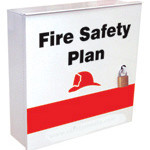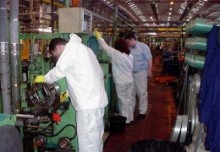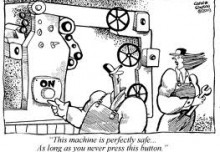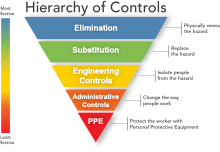 Planning for Fire Emergencies
Planning for Fire Emergencies
Every day, someone experiences an emergency. Webster’s defines emergency as follows: an unexpected and usually dangerous situation that calls for immediate action. Emergencies in the workplace come in all sizes, from small that can be handled by an individual to very large that require the use of outside resources.
Let’s take a look at fire safety.
Develop an Emergency Action Plan (EAP) and a Fire Prevention Plan, which are OSHA requirements. Each of these 2 plans require companies with greater than 10 employees must have a written plan.
An EAP requires the following:
- Procedures for reporting a fire or other emergency
- Procedures for emergency evacuation, including type of evacuation and exit route assignments
- ***Procedures to be followed by employees who remain to operate critical plant operations before they evacuate
- Procedures to account for all employees after evacuation
- Procedures to be followed by employees performing rescue or medical duties
- The name, job title, and contact information of every employee who may be contacted by other employees who need more information about the plan or an explanation of their duties under the plan
- An employer must have and maintain an alarm system audible and easily recognizable for all employees in every area
A Fire Prevention Plan requires the following:
- A list of all major fire hazards, proper handling and storage procedures for hazardous materials, potential ignition sources and their control, and the type of fire protection equipment necessary to control each major hazard
- Procedures to control accumulations of flammable and combustible waste materials
- Procedures for regular maintenance of safeguards installed on heat-producing equipment to prevent the accidental ignition of combustible materials
- The name or job title of employees responsible for maintaining equipment to prevent or control sources of ignition or fires
- The name or job title of employees responsible for the control of fuel source hazards
The required elements of the OSHA standards can be found here:
Once you have addressed the EAP Fire Prevention Plan, you need to determine if you are going to have portable fire extinguishers on site and accessible to employees. Unless specifically required by another standard, such as the application of Hot Work, workplaces are not required to have portable fire extinguishers. ***If portable fire extinguishers are not provided, then a total evacuation of the in the event of a fire is required. If you choose to have or need to have extinguishers available for use, employees must be trained annually.
When fire extinguishers are provided in the workplace, each employee must have annual training on the general principles of fire extinguisher use and the hazards involved with the initial stage of firefighting. There is no annual requirement, however, for hands on training.
If you have employees, as designated in your EAP, who have been designated to use firefighting equipment as part of an emergency action plan, you must provide annual training for the use of the appropriate equipment. This training must include hands on training on the use of representative firefighting equipment.
The required elements for portable fire extinguishers can be found by clicking here for the OSHA standard and click here for the NFPA Standard.
Some facilities may be required to have buildings protected by a fire sprinkler system. There are several types of sprinkler systems including water, dry, and foam. The system or systems that are needed would depend upon the surroundings and combustibles. These systems may be a requirement of local or state building codes or insurance companies. There is an OSHA standard that gives basic guidelines for sprinkler systems, 29 CFR 1910.159. OSHA has a checklist for the standard that can be found by clicking here. There are several National Fire Protection Standards (NFPA) that give more specific requirements. One that deals with the testing and maintenance of water sprinkler systems is NFPA 25, Standard for the Inspection, Testing, and Maintenance of Water-Based Fire Protection Systems.
Consult with your insurance company, local authorities, state authorities and loss prevention advisors to determine the exact requirements for fire extinguishers and sprinkler systems.













